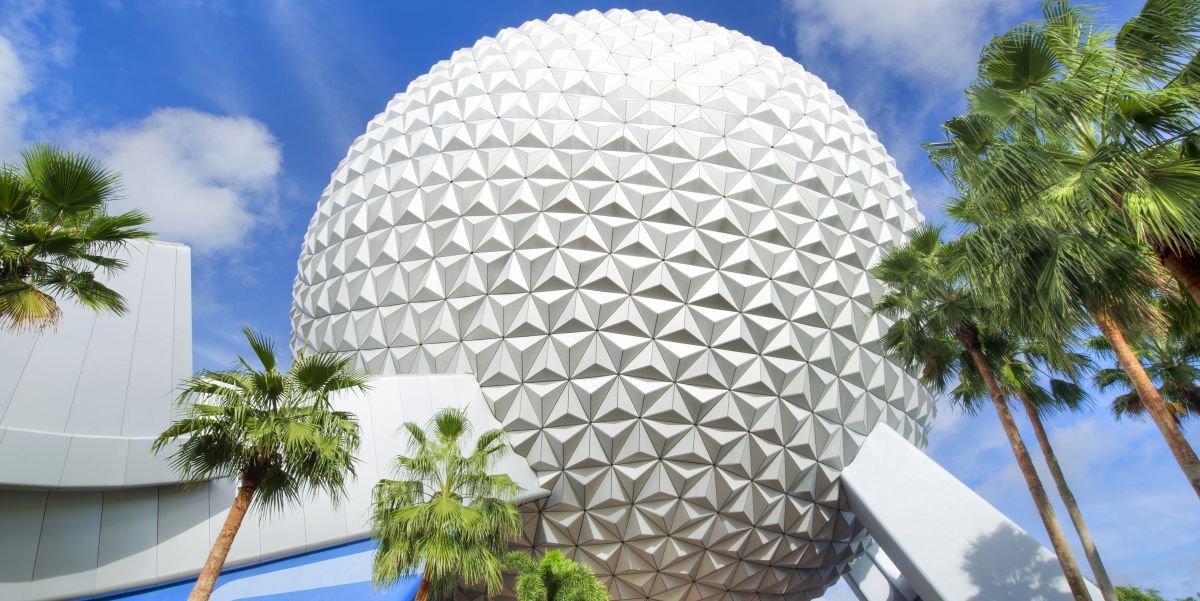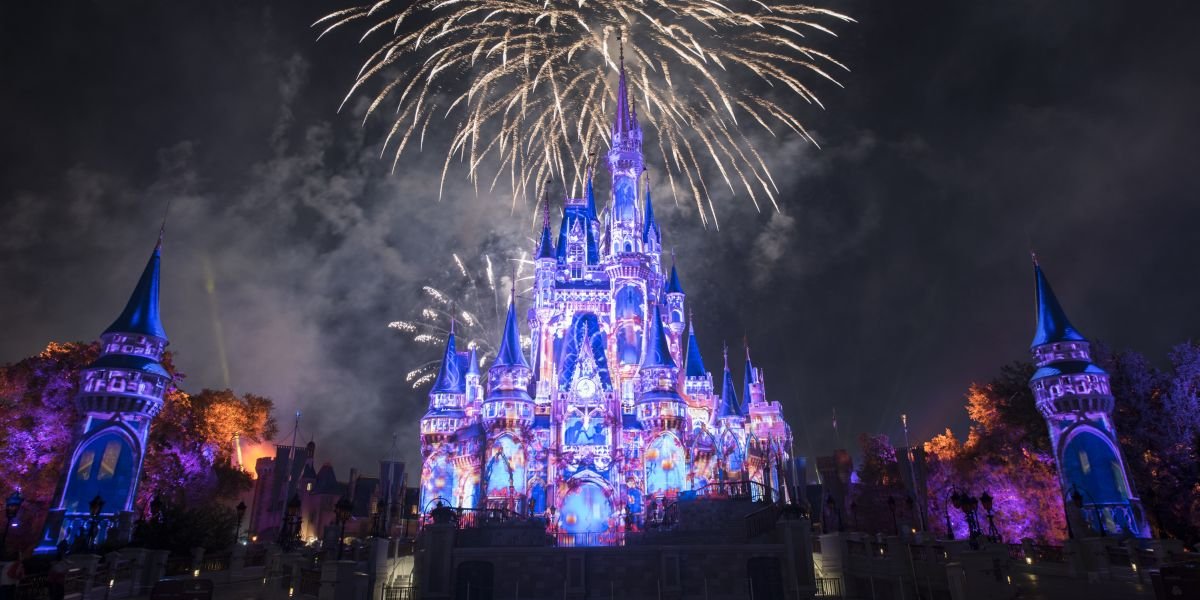Epcot: The Original Plan For Walt Disney World's City Of The Future

Of all the Disney theme parks around the world, quite possibly the most interesting is Epcot. While the park has gone through many changes in its nearly 40 year history, it's still the location that, in many ways, still doesn't feel like a theme park in the traditional sense. This was by design, because not only did those behind the creation of Epcot Center, as it was originally called, want it to feel separate from Disneyland and Walt Disney World's own Magic Kingdom, but originally this City of the Future was never meant to a theme park at all.
While Walt Disney never got to see his Disney World project come to life, he had big plans for the hundreds of acres of swamp land he purchased in Florida in the 1960s. An East Coast Disneyland was only one small part of what Walt had in mind; the centerpiece of the new project was supposed to be an actual city run by Disney, and the city was called EPCOT.
Pre-EPCOT: The Florida Project
Walt Disney got his start in animation, but from the moment the Disney Bros. Studio started to become successful, it seems that Walt Disney was perpetually looking for the next big challenge. After he conquered animated shorts, he got into making animated feature films. After Snow White and the Seven Dwarfs became the biggest movie ever, and his next couple features failed to light up the box office in a similar way, he began to focus on live-action films.
Eventually movies of any kind seemed to bore him, so he then set his sights on the project that eventually became Disneyland. After Disneyland's success and the 1964's World's Fair showed that there was interest on the East Coast for another Disneyland-like project, Walt Disney began to seriously investigate the idea, but almost from the beginning, he didn't want to just make another Disneyland.
His reasoning for buying as much land as he did in Florida was twofold. First, he wanted to be able to control the area surrounding his construction, something he regretted not doing in Anaheim. Second, his initial plan to build an East Coast Disneyland was really just a means to an end. He was going to use the business from the theme park resort to fund a much larger concept: the Experimental Prototype Community of Tomorrow, EPCOT.
EPCOT: Walt Disney Plans His City Of The Future
When Walt built Disneyland, he wanted to take a concept that he thought had serious flaws, the carnival, and fix those problems to make something better. If Walt could do it with something like Disneyland, could he do the same thing with a whole city?
Cities were dirty and transportation within them was complicated... and also dirty. They were incredibly inefficient in so many ways. The problem was that taking an existing city and fixing it was essentially impossible, as all of the biggest problems were intrinsic to the concept and essentially baked in. But if you built an entire city from the ground up with fixing these problems in mind, could you make something better?
CINEMABLEND NEWSLETTER
Your Daily Blend of Entertainment News
The city would use a radial design not unlike Disneyland itself, using a central core that would be the urban center, with the urban density shrinking the further out you went. Transportation inside the city would be handled by automated Peoplemovers, exactly like the attraction still found at Magic Kingdom today. This is how residents would get to the greenbelt area for leisure or even take a trip to the grocery store.
Transportation from the city to other parts of Disney World, like the industrial center (where most people living in the city would have jobs), the dedicated airport or to Magic Kingdom itself, would be handled by monorail.
Since nobody living at EPCOT would need a car on a daily basis, cars wouldn't be allowed on the city level and the city could be designed more efficiently since it wouldn't require space for automobiles for either parking or roads. EPCOT would be a city for pedestrians and public transit. If residents owned a car for taking trips outside of EPCOT and Disney World, it would be kept in a separate level below the main city, which is also how trucks carrying the goods the city needed would transport them.
Residences would take the form of apartments on the outside edge of the city. The thing that would set these apartments apart from other residences is that Walt Disney wanted the people living in EPCOT to be at the forefront of technology. The idea was that the companies that had businesses at the industrial park area would use the residents as testers for new products, so people living at EPCOT would have access to the cutting edge of technology.
The Death of Walt Disney and the Death of EPCOT
Walt Disney died in December of 1966, years before even Magic Kingdom would be open to the public. Walt's brother, Roy E. Disney, took on the responsibilities of leading the company even though he'd been planning to retire. His goal was to complete Magic Kingdom and get Disney World, which would be renamed Walt Disney World, up and running.
In 1967, the Reedy Creek Improvement District, a special Florida district which encompasses Walt Disney World, was approved by the state of Florida. The process for creating the special district was started largely because the EPCOT project was going to require such a special district in order for Disney to have the control that Walt wanted in designing the city.
However, spearheading EPCOT would prove to be too much, and so that project was put aside. The simple fact was that without Walt, there just wasn't anybody passionate enough, or who understood exactly what Walt wanted well enough, to move it forward. Getting into city planning just wasn't something that the new Walt Disney Company wanted to do without Walt there to run it.
The Epcot Center Of Today
In the 1970s, Disney CEO Card Walker reconsidered the EPCOT concept, but there was still little interest in getting involved in city planning. Instead, the Epcot idea was used as inspiration for what would become a brand new theme park. Instead of a futuristic city, Epcot would be designed to be a permanent world's fair. Epcot Center would include an area that was called Future World, a hat tip to Walt's desire that EPCOT the city would be driven by the newest technology. The other half would be the World Showcase, with multiple pavilions each dedicated to different cultures and nations around the world.
Today, the park is simply called Epcot, and while a lot of Disney IP has become part of the park that originally had none, the core of Epcot is still there. The park is currently undergoing a major renovation that will split up Future World into smaller areas, but there will still be a home for the celebration of technology and the future as well as the other elements that make up the world we live in.
Could EPCOT Have Worked?
On its face, there's a lot of potential problems that an actual EPCOT would have had to overcome. The idea that all the residents would largely live, work and play in this same space only works as long as all the pieces function. If a company decided to leave the industrial park, or not enough companies could be found to inhabit it in the first place, then the rest of it would break down. The continual rotation of products into the homes of the residents also looks like a logistical nightmare waiting to happen.
At the same time, every other time Walt Disney had a crazy idea, he found a way to not only make it work, but make it an unparalleled success. I certainly wouldn't have bet against him. And there's definitely a lot appealing about the concept. A self-contained city where moving around was easy; everything you needed was close at hand and there was also a theme park just a monorail ride away? I'm sure finding people who wanted to live in a community planned by Walt Disney would have been one problem EPCOT would have never had.

CinemaBlend’s resident theme park junkie and amateur Disney historian, Dirk began writing for CinemaBlend as a freelancer in 2015 before joining the site full-time in 2018. He has previously held positions as a Staff Writer and Games Editor, but has more recently transformed his true passion into his job as the head of the site's Theme Park section. He has previously done freelance work for various gaming and technology sites. Prior to starting his second career as a writer he worked for 12 years in sales for various companies within the consumer electronics industry. He has a degree in political science from the University of California, Davis. Is an armchair Imagineer, Epcot Stan, Future Club 33 Member.
Most Popular






